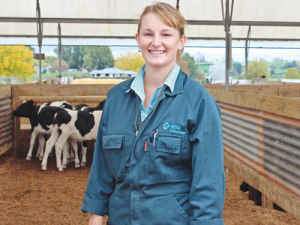Recycling 10,000 cow collars
MSD Animal Health New Zealand has partnered with Agrecovery in New Zealand’s first pilot to recycle SenseHub Dairy Collars (previously known as Allflex Collars) used by its dairy farmer clients.
 Vet Jo Houlter says money spent up front on a quality triple combination drench can save money later in terms of animal production.
Vet Jo Houlter says money spent up front on a quality triple combination drench can save money later in terms of animal production.
Farmers can no longer simply buy the cheapest drench, assume it is doing a good job of killing worms and not consider the longer term implications, says Jo Houlter, veterinary technical advisor, MSD Animal Health.
“Today, preventing and managing drench resistance and worm control must be a consideration in every animal health decision a farmer makes,” Houlter says. “Drench resistant worms are common and widespread in sheep and cattle in New Zealand and need to be actively managed.”
She says there are three main strategies for managing drench resistance on NZ farms:
- Minimising high-risk drenching and management practices
- Maintaining worm populations not exposed to drenching by the use of refugia
- Using combination drenches.
Combination drenches contain a mixture of different drench actives and worms resistant to one active ingredient will generally be killed by another.
“Field studies and modelling have shown the potential of combinations to slow the development of resistance,” Houlter say. “These studies all show that combinations have the greatest potential to slow drench resistance when they are used before resistance has developed in the farm worm population.”
She says that, by far, the best time to use combination drenches is when the actives are still effective on their own before worms have developed significant resistance.
“Saving the combination drenches until you need them is not the correct approach.”
She says triple active drenches are better than double actives, but are also more expensive. “This extra expense provides insurance against the possible future development of resistance and means that you are doing the best thing for your sheep, cattle and farm.”
Houlter says Alliance is a triple combination drench that includes levamisole, abamectin and oxfendazole, some of the best actives to control worms in sheep and cattle on NZ farms.
“Will a lesser, cheaper drench do the same job?” she asks. “Maybe but possibly not and you won’t know unless drench testing is carried out.”
Houlter says money spent up front on a quality triple combination drench can save money later in terms of animal production and the possible need to use even more expensive drenches or more drastic measures when drench resistance has developed on your property.
Alliance has been developed, proven and made in NZ for NZ livestock.
'Common sense' cuts to government red tape will make it easier for New Zealand to deliver safe food to more markets.
Balclutha farmer Renae Martin remembers the moment she fell in love with cows.
Academic freedom is a privilege and it's put at risk when people abuse it.
All eyes are on milk production in New Zealand and its impact on global dairy prices in the coming months.
Claims that some Southland farmers were invoiced up to $4000 for winter grazing compliance checks despite not breaching rules are being rejected by Environment Southland.
According to the most recent Rabobank Rural Confidence Survey, farmer confidence has inched higher, reaching its second highest reading in the last decade.